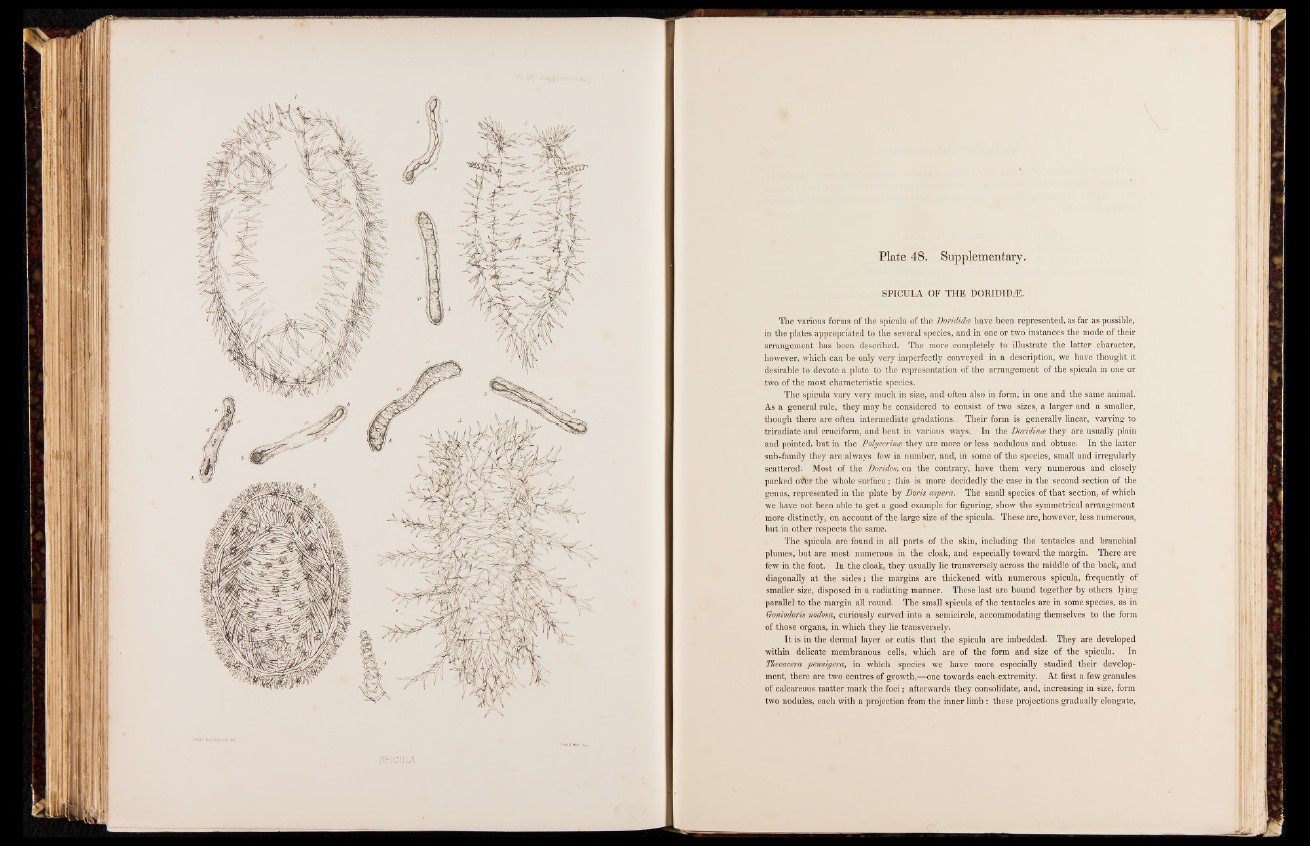
Plate 48. Supplementary.
SPICULA OF THE DORIDIDvE.
The various forms of the spicula of the Dorididce have been represented, as far as possible,
in the plates appropriated to the several species, and in one or two instances the mode of their
arrangement has been described. The more completely to illustrate the latter character,
however, which can be only very imperfectly conveyed in a description, we have thought it
desirable to devote a plate to the representation of the arrangement of the spicula in one or
two of the most characteristic species.
The spicula vary very much in size, and often also in form, in one and the same animal.
As a general rule, they may be considered to consist of two sizes, a larger and a smaller,
though there are Often intermediate gradations. Their form is generally linear, varying to
triradiate and cruciform, and bent in various ways. In the Doridinm they are usually plain
and pointed, but in the Polycerina they are more or less nodulous and obtuse. In the latter
sub-family they are always few in number, and, in some of the species, small and irregularly
scattered. Most of the Dorides, on the contrary, have them very numerous and closely
packed o'ter the whole surface; this is more decidedly the case in the second section of the
genus, represented in the plate by Doris aspera. The small species of that section, of which
we have not been able to get a good example for figuring, show the symmetrical arrangement
more distinctly, on account of the large size of the spicula. These are, however, less numerous,
but in other respects the same.
The spicula are found in all parts of the skin, including the tentacles and branchial
plumes, but are most numerous in the cloak, and especially toward the margin'. There are
few in the foot. In the cloak, they usually lie transversely across the middle of the back, and
diagonally at the sides; the margins are thickened with numerous spicula, frequently of
smaller size, disposed in a radiating manner. These last are bound together by others lying
parallel to the margin all round. The small spicula of the tentacles are in some species, as in
Goniodoris nodosa, curiously curved into a semicircle, accommodating themselves to the form
of those organs, in which they lie transversely.
It is in the dermal layer or cutis that the spicula are imbedded. They are developed
within delicate membranous cells, which are of the form and size of the spicula. In
Thecacera pennigera, in which species we have more especially studied their development,
there are two centres of growth,—one towards each extremity. At first a few granules
of calcareous matter mark the foci; afterwards they consolidate, and, increasing in size, form
two nodules, each with a projection from the inner limb: these projections gradually elongate,